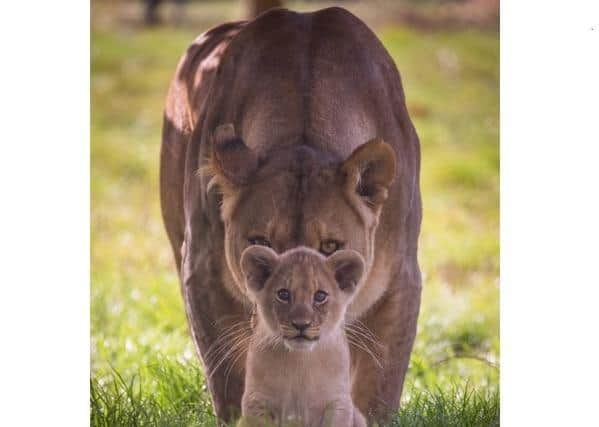Woburn Safari Park’s award-winning photographer shares her tips ahead of World Photography Day
and live on Freeview channel 276
To celebrate World Photography Day, Woburn’s incredible photographer is sharing her insider tips.
World Photography Day (August 19) is an annual celebration of the best in international photography, showcasing work from seasoned professionals to talented amateurs.
Advertisement
Hide AdAdvertisement
Hide AdIt is an art form that is close to the hearts of all those working at Woburn Safari Park because of its ability to capture the spirit of the animals they work with and care for.


Abi Crowley, marketing manager, said: "A photograph doesn’t just show an animal in a time and a place, you can really see their character and strength shine through.
"Photos are a wonderful way for us to share the wonder of the natural world with the public, which helps us to inspire support for important conservation projects."
Woburn Safari Park’s official photographer, Bridget Davey, took this stunning portrait of lioness Zuri and cub, which incredibly has been viewed online more than 200 million times, and shared thousands of times.
Advertisement
Hide AdAdvertisement
Hide AdThe image has also been shared as a high quality print by Woburn in return for donations, garnering over £1,500 for charity Wildcat Conservation Alliance.
The shot has also been used by a German haulage company on the sides of their fleet of vehicles.
Bridget, who was safely sat behind a high fence at the time, said: "Capturing this shot was a matter of being in the right place at the right time and waiting it out.
"Because Zuri wasn’t familiar with me in the way she is with her keepers, it took her a long time to settle and accept me in her space.
Advertisement
Hide AdAdvertisement
Hide Ad"I sat quietly on the ground for about two hours and made myself as unobtrusive as possible.
"Eventually, she seemed to accept I was no threat to her cub. When they started walking towards me I quietly lifted my camera and got the shot.
"Sometimes, you get goosebumps and just know you’ve caught something really special – and sure enough, this photograph has captured the hearts of wildlife lovers everywhere."
Showing early promise
Bridget, who was recently awarded Judge’s Choice in the International Pet Photographer of the Year 2021 competition, became hooked on photography at the age of just seven, after her father bought her a camera for her birthday.
Advertisement
Hide AdAdvertisement
Hide AdShe said: "It was old-school point-and-shoot and heavy on film but I loved it.
"I took photographs of family and friends, but it was only after I met my husband and moved from Germany to the UK that I started taking photographs of animals, wildlife and nature as part of the team at Woburn Abbey.
"While there, I had the opportunity to take photos of the animals at the Park – and the rest is history."
Bridget’s top tips on how to capture the perfect animal photo:
Advertisement
Hide AdAdvertisement
Hide Ad> Choose a time of day when you are able to take your time and the animals might be more active (in cooler temperatures)
> Invest in a long lens if you want to take shots of the bigger carnivores, such as tigers. They’re famous for their camouflage, so your smartphone camera might not be up to the job!
> Be patient – and prepare to be uncomfortable. For nature shots, you may be outside for hours so make sure you’re appropriately dressed and have all the essentials, such as snacks, water and suncream (and a spare camera battery)
> Don’t wait for sunny days. Overcast conditions are often better as there are fewer shadows, and the animals may be more active when it’s cooler.